The Treaty of Versailles: Harbinger of Peace and Source of Frustration
On 28 June 1918, exactly one hundred years ago, the treaty that would finally end World War I was signed in Versailles. That peace treaty would redraw the map of Europe. Belgium, which had suffered greatly during the war, left for Versailles with a heart full of hope, but was forced to leave nearly empty-handed. Moreover, the treaty also managed to strain the country’s relationships with the Netherlands.
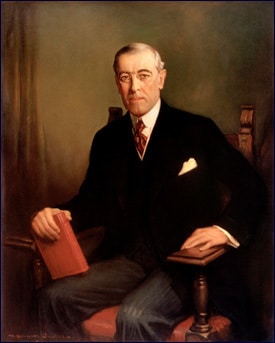 Woodrow Wilson
Woodrow WilsonOn 13 December 1918, American president Woodrow Wilson arrived in France by ship. The people of France greeted him as the man who would bring them peace. In a speech he gave at the start of the final year of the war, the president had outlined a plan. He declared fourteen points that he regarded as the only possible basis of a restored world order. Important elements in the peace plan he unveiled were that no peace could last if it favoured a victor, or a ‘peace without victory’, and that a general association of nations, a ‘league of nations’ must be formed. Wilson believed that international conflict could be avoided by having open and transparent diplomatic negotiations. The League of Nations would be a perfect way to solve disputes between countries.
Kind to Germany
The European allied powers, however, showed little enthusiasm for Wilson’s plan. They felt the president treated the Germans far too leniently. Moreover, Germany itself was hardly satisfied with the American president’s ideas. Yet, as the country was held in duress by the ever-evolving exigencies of war, as well as its domestic situation – -numerous communist protesters took to the streets – the Germans accepted a peace treaty based on Wilson’s plan.
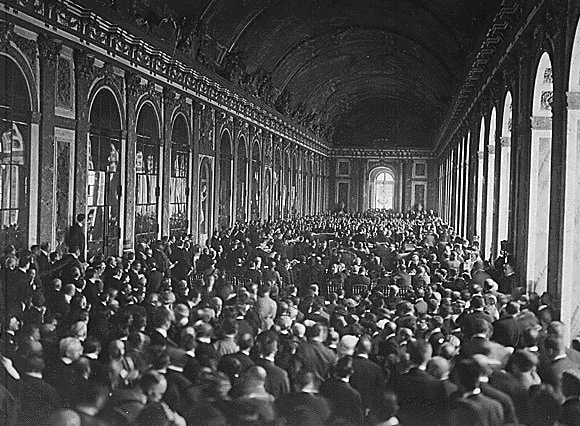 The Hall of Mirrors in the Palace of Versailles where the peace treaty was signed
The Hall of Mirrors in the Palace of Versailles where the peace treaty was signedSettling old scores
The peace conference during which a treaty with Germany was to be drafted began on 18 January 1919 in the Palace of Versailles’ Hall of Mirrors. The conference was attended by 27 delegations representing the allied nations, which amounted to over a thousand delegates. Based solely on the location and the starting date it was clear that Wilson’s basic principle of ‘peace without victory’ would not be achieved. After all, in that same location on that exact day in 1871, the Franco-Prussian War was ended, and the German Empire was proclaimed. Clearly, the French were planning to settle an old score in Versailles.
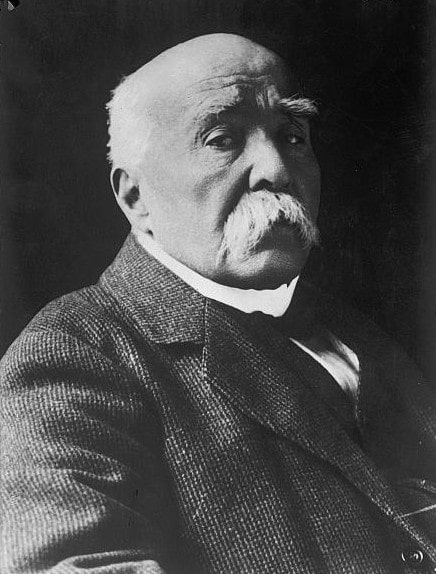
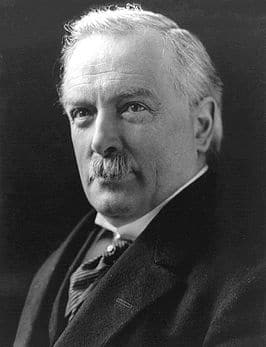 Georges Clemenceau (France) and David Lloyd George (Britain)
Georges Clemenceau (France) and David Lloyd George (Britain)France, the United Kingdom and the United States in essence led the conference. French and English heads of government Georges Clemenceau and David Lloyd George, as well as American president Woodron Wilson, were cast in the leading roles. In theory, representatives from both Japan and Italy were ensured equal treatment. Smaller countries were invited to present their wish lists to the larger powers.
Tough negotiations
The negotiations were intended to strike a balance between retaliation and sustainable peace. France, in particular, wanted Germany to pay a heavy price for the war. The country demanded territorial expansion and substantial reparations. The other allies nations did not push it that far, although they changed their points of view quite regularly during the peace talks. In short: negotiations were especially tough. They were also complicated as these were the first ever peace talks that were affected by public opinion. Every single person sat at the negotiation table represented a democratically elected government. Over 700 reporters were present during the negotiations. In their respective home countries, their accounts of what was being debated in Versailles were at times met with great disdain.
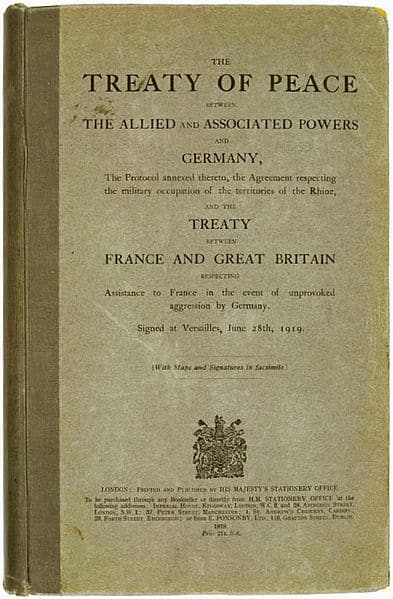 English version of the Treaty of Versailles
English version of the Treaty of Versailles132 billion gold marks
The allies reached an agreement on 6 May 1919. The German government was summoned to Versailles and was presented with a non-negotiable treaty. Initially, Germany resisted the peace plan, but eventually signed the treaty on 28 June, in the Hall of Mirrors in Versailles. The treaty consists of 440 articles in total. It details Germany’s redrawn borders, lists various military restrictions, and the entire first chapter is dedicated to the League of Nations. The issues surrounding the reparations would not be solved until 1921; Germany was required to pay 132 billion gold marks. In addition, arrangements were made regarding the former German colonies. They were transformed into League of Nations mandates, and divided between a number of Western nations. Belgium, for example, took Ruanda-Urundi under mandate.
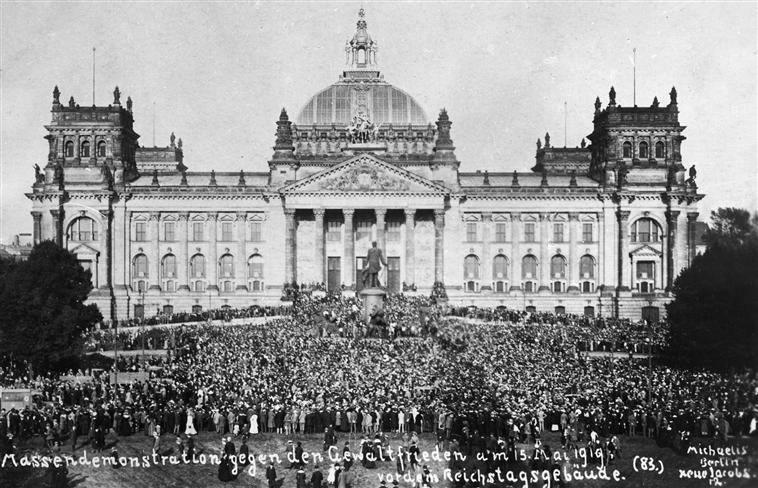 Mass demonstration in front of the Reichstag against the Treaty of Versailles
Mass demonstration in front of the Reichstag against the Treaty of VersaillesUnreasonable Belgian demands
To the Belgian government, the peace talks in Versailles were an extremely frustrating affair. Belgium had suffered immensely during World War I, and Belgian diplomats went into negotiations with extremely high – and, as it turned out, somewhat unrealistic – expectations. The Belgian delegates demanded better strategic borders, colonial expansion, and a fair compensation for the damages caused. In order to be able to protect their borders better, they also requested annexation of certain territories belonging to the Netherlands, which had remained neutral during the conflict. Unsurprisingly, the Netherlands refused, and this refusal was supported by the other allies. Belgium and the Netherlands took diametrically opposed standpoints. The Netherlands were determined to continue their politics of neutrality, as this had proven successful during the war. Belgium, on the other hand, believed its neutral stance had not earned them sufficient guarantees, and the country demanded better strategic borders as well as binding agreements with the allies, assuring support in case of another German attack.
 The Signing of Peace in the Hall of Mirrors, Versailles, painting by William Orpen (detail), 1919
The Signing of Peace in the Hall of Mirrors, Versailles, painting by William Orpen (detail), 1919© Imperial War Museum
Strained relationships
In the end, Belgium was not able to salvage a great deal. Even the efforts made by King Albert I, one of the First World War’s true heroes, did not amount to much, except for a temper tantrum thrown by the French Prime Minister Clemenceau. Relationships with neighbouring country the Netherlands were strained for many years after. In an attempt to get some results, the Belgian diplomats – against the British’ wishes – solicited support from the French. In 1923, the French, assisted by the Belgians, occupied the Ruhr district, thus hoping to speed up the German reparations. Again, the British were not amused, and this would definitely taint the Belgian’s international reputation. Conversely, the Netherlands’ reputation flourished when, in 1921, the League of Nations established its International Court of Justice in The Hague.
Foundations for World War II ?
The Treaty of Versailles had been quite controversial from the outset. British economist Keynes, who took part in the negotiations, labelled the treaty both “immoral and incompetent”. American president Wilson stated, “If I were a German, I think I should never sign it.” Incidentally, the United States never ratified the Treaty of Versailles. The Senate had denied consent to the treaty. Wilson hoped to gain the Senate’s support by way of a second vote, but the treaty failed to win the necessary majority. The United States therefore, never joined the League of Nations, which was actually founded at the initiative of their very own president. Other measures in the Treaty were also not carried out, or in part. Germany, for example, has only payed part of the reparations in effect. Neither the United States nor England have forced the Germans to carry out what had been agreed.
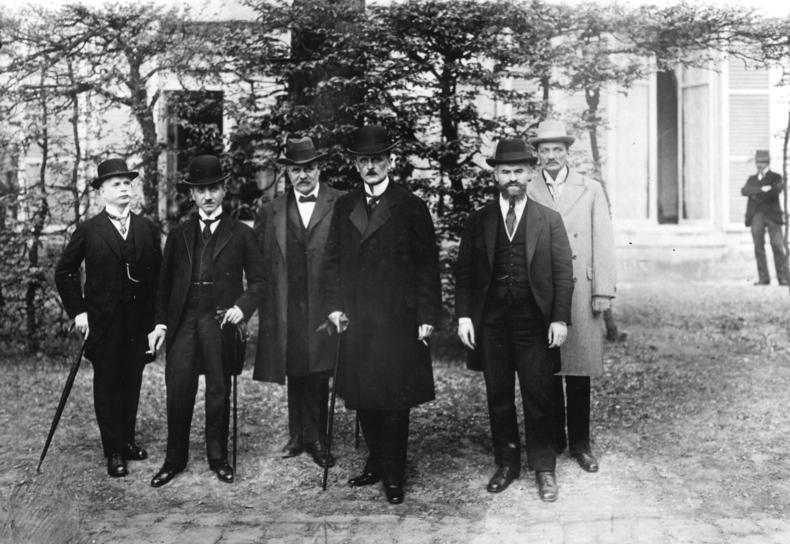 The German delegation to the peace negotiations in Versailles.
The German delegation to the peace negotiations in Versailles.It has been claimed that the Treaty of Versailles lay the foundations for World War II. This assertion is only partially true. Many other elements have also played an important role in the matter. However, it cannot be denied that this treaty, perceived by the Germans as a deliberate act of humiliation, served as excellent propaganda for Hitler and his Nazi Party.












